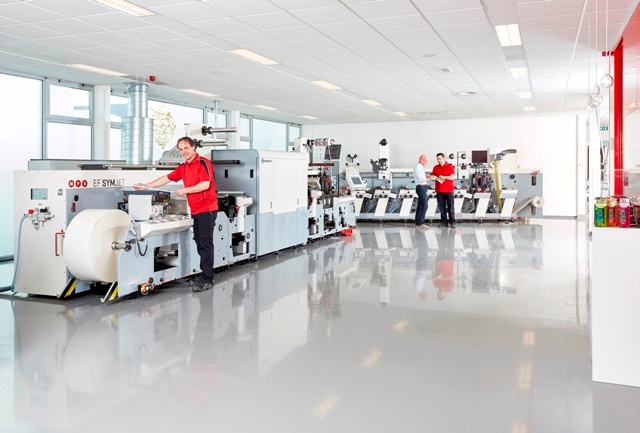As a production leader, it’s your goal to meet shipping dates, guarantee consistent quality, and optimise the printing process. And that’s a real challenge in the label industry, where job sizes get smaller and delivery times shorter.
Therefore, it becomes increasingly important to have a viable printing process. A printing process that ensures your goals can be achieved and secures a competitive position in the market. In this blog, I’ll elaborate on the most important factors that determine whether your printing process is future-proof and tell you about the first step to realise a future-proof process.
1. The right knowledge of printing processes and presses
If your team doesn’t have the required knowledge of printing processes or presses, you will have trouble lifting it to a higher level. To make sure you have the right knowledge at your disposal, you need well-trained operators.
In practice, it’s often still the case that operators don’t have a graphic background and therefore haven’t received the education they need. They know how to run a printing job, but don’t have the knowledge to solve a problem, can’t act preventatively and don’t know all the options of a printing press. As a result, you don’t have the right foundation to optimise your printing process.
You need people who are well-trained, are able to make failure analyses, know how to solve problems and use all the possibilities of your printing presses. You can’t do it all by yourself and therefore it makes sense to invest in your operators.

2. Appropriate knowledge of materials
Having the right knowledge of printing processes and presses at your disposal is an important factor, but extensive materials knowledge is also crucial. There is considerable pressure on prices in the label industry and therefore, cheap materials like substrates, inks, aniloxes, printing plates, and cushion tape are purchased increasingly.
But material of inferior quality also results in lower quality output. For example: pre-calculation tells you to run an output of 100 metres per minute, but because of lower quality material you only run 60 metres per minute. Many organisations save on procurement, but as a result, output is reduced.
This is a problem that can be solved relatively easily, but only if you have the right knowledge of materials at your disposal. Material of higher quality may be more expensive, but also results in faster runs and fewer problems. Therefore, in the end, it saves you costs!
3. A successful cooperation with suppliers
If you don't possess full knowledge of the printing processes and presses, a strong relationship with your suppliers is imperative. They do have the experience you lack and need.
If you opt for materials at the lowest price, you will also often have to deal with suppliers who are unable to provide the necessary support and knowledge. That's why you more or less end up in a vicious circle. Your operators don’t have the required knowledge, and neither can they get it from suppliers. Choosing lower quality material therefore makes it harder to improve the entire printing process.
If you select higher quality material brands, this will lead to increased supplier support. They will use their expertise to think along with you about improvement opportunities and help you solve problems.
4. Integration between printing presses and the Management Information System
Printing presses are no ‘stand-alone machines’, although they are still often seen as such. Every printing press is part of a total system, and should, therefore, be linked to the Management Information System (MIS).
In many organisations, operators take care of production preparation and the entering of all the data themselves. If you integrate the printing press and the Management Information System, necessary data will be automatically fed into the press. This saves time in the pre-press stage and eliminates human error.
That’s not all. The MIS also provides you with real-time information during jobs runs. It tells you:
- What the cost price per label is
- Whether the planned schedule is going to be met
- If a job is running on the calculated speed
- The waste figures
It helps you to get more grip on the entire printing process and implement more targeted process improvements.
The first step to a future-proof printing process
The presence of appropriate knowledge and well-trained operators, the integration of your printing presses with the MIS, and a successful cooperation with your suppliers are crucial to creating a future-proof printing process. But what is the first step you can take to achieve this?
The first thing you can do is make a proper analysis of every printing press regarding output and quality. What’s the output per m², the printing speed, set up time, the amount of printing waste and the number of complaints from customers? Measure these values objectively for each printing press without concluding immediately.
This data helps you define which factors to tackle first to improve your process.
Or you can investigate how viable your printing process actually is in the long term. If you’d like to receive an indication of that viability, we have a useful tool that helps.
The only thing you have to do is answer 9 short questions. Each question involves a different topic that affects the viability of your printing process. It helps you find out to what extent you should consider implementing process optimisations, and in what areas.
{{cta('fd4ce9db-466d-4995-8a85-d1284b3b741d')}}